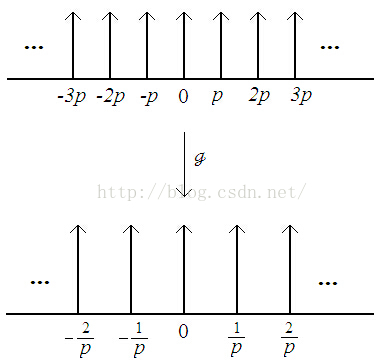SHAH FUNCTION
Maths
Mathematically, Shah function is actually an extension of Delta function. This work will shed light on it in the context of its celebrated application --- Crystal Gazing --- for intuitive understanding.
Set-up
(1) X-rays were discovered in 1895 by Roentgen who concluded that they are waves with 10-8 cm of wavelength, thus too small to measure;
(2) Crystals are atoms arrayed on a lattice. Max von Lave studied atomic crystal via diffraction approach with X-rays in 1912.
For experimental details, we need first bring up the fundamental hypothesis,
(1) X-rays are waves, so will diffract;
(2) Crystals have lattice atomic structure;
(3) Spacing of atoms is comparable to wavelength of X-rays.
Derivation
In one-dimensional case, we think of a 1-D crystal as evenly spaced along a line, effectively an infinite array, as shown Figure 1.

Figure 1
The function ro(x) denotes an electron density for a single atom. Then, the entire electron density distribution rop(x) for crystal is given by the periodized version of ro(x),

By defining

we have

Figure 2 shows the pictorial representation of Shahp(x), which is a periodization of Delta function.

Figure 2
In physics, a diffraction pattern is determined by the Fourier transform taken by nature. By taking the Fourier transform of rop(x), we obtain

where the Fourier transform of ro is a fixed function depending on the nature of crystal of interest. Question is, what is the Fourier transform of Shahp(x)?
Taking p=1, we obtain a special case,

where Shahp(x) makes senses as a distribution, which is defined by pairing with a test function in Schwartz class,

On the other hand,

One can write down

This doesn't converge classically. But it is fine as a distribution. However, we are missing something here.
To gain further progress, we have to introduce the deepest fact known about integers, the Poisson summation formula (See its proof in Appendix), given by

Therefore,

Consequently,

Back to the general case,

Therefore, by using the stretching property of Delta function, we represent Shahp(x) in terms of Shah(x/p) with a coefficient of (1/p).
Further,

Consequently,

The process is illustrated in Figure 3.

Figure 3
Armed with this technique, we can get back to crystal problem,

In conclusion, visually, you will see in a diffraction experiment a pattern spaced by (1/p). With nature taking a Fourier transform for you, you measure the spacing the pattern and reach a conclusion that the spacing length is the reciprocal of spacing in the atom in crystal.
Appendix I
Prove: for any rapidly decreasing function phi(x) and integers k,

First, we periodize phi to have period of 1, i.e., (1)

Then, expand PHI in Fourier series,

Knowing that the Fourier coefficient of the composed function by periodization equals the value evaluated at the Fourier transform of periodized function, i.e.,

we have (2)

Finally, evaluating (1) and (2) at zero yields

Appendix II
According the derivation above, we obtain an important property,

最后
以上就是大胆酒窝最近收集整理的关于SHAH FUNCTION的全部内容,更多相关SHAH内容请搜索靠谱客的其他文章。






![[傅里叶变换及其应用学习笔记] 十二. 速降函数、分布速降函数分布(distribution)匹配运算](https://file2.kaopuke.com:8081/files_image/reation/bcimg11.png)
](https://file2.kaopuke.com:8081/files_image/reation/bcimg12.png)
发表评论 取消回复